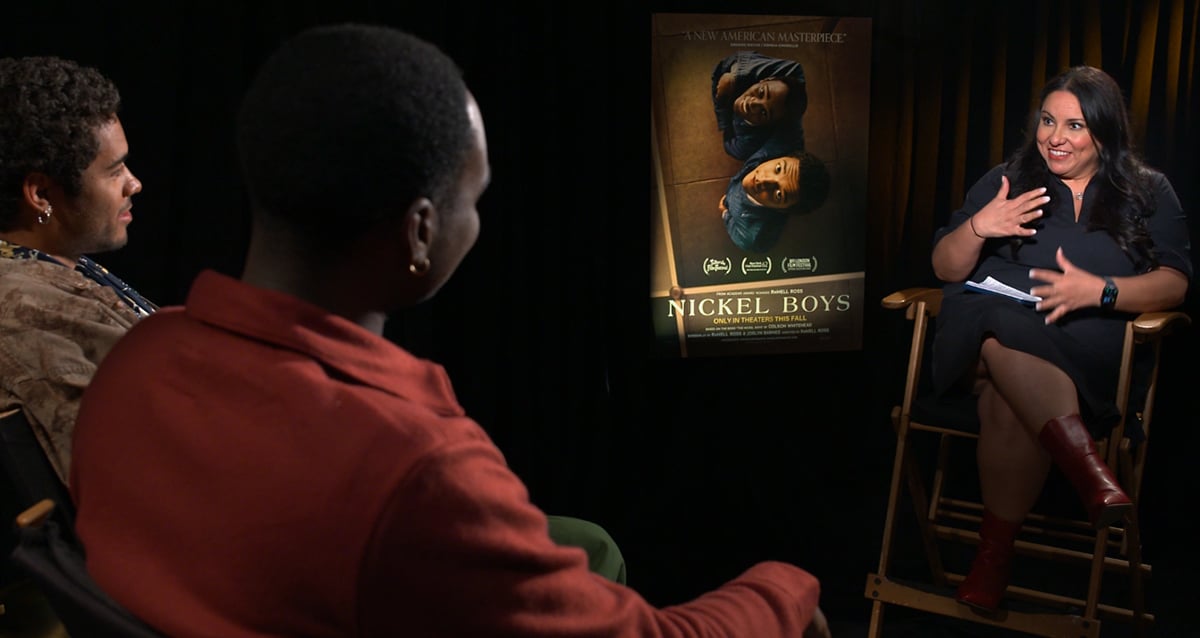Books can highlight an experience, making you feel empathy for the characters and highlighting your shared humanity. But movies completely immerse you and when that movie is director RaMell Ross’s Nickel Boys, the experience puts a steroid-injected spotlight on the story. Especially since Ross makes the rare choice to shoot the entire film in first person, a move that results in one of the most moving movies in years if not decades.
Based on the Pulitzer Prize-winning book by Colson Whitehead, Nickel Boys follows two young African-American boys, Elwood (Ethan Herisse) and Turner (Brandon Wilson), who become friends at a reformatory school during the growing Civil Rights movement.
Both the film and the book tell the tale of Nickel Academy in the panhandle of Florida. Though Nickel Academy is fictional, its origins come from the very real Arthur G. Dozier School for Boys in Marianna Florida. Dozier is the site of nearly 100 unmarked graves of boys who are believed to have died from abuse, from the early 1900s to 1973. It wasn’t until a failed state inspection in 2009 that the abuse began formally coming to light. In 2011, the government shut the school’s doors permanently but it would take another six years before the state would formally acknowledge the abuse and apologize to the survivors.
Sure acknowledgement is a start, but is it enough? That is the question Latina Media Co posed to the cast in our one-on-one interviews in Los Angeles.
“No, I don’t think it is,” says Ethan Herisse. “Acknowledgement is only the first of many steps. I would like for people to acknowledge, but then I’d like for people to have conversations with others. I’d like for it to be shared on a wide scale. I think acknowledgement followed by conversation is probably what’s going to inspire all the other steps that will lead to the progress that we want to see.”
The same sentiment is shared by Aunjanue Ellis-Taylor, who plays Elwood’s grandmother. The Oscar-nominated actress said, “Acknowledgment, you’re right, is not enough. There has to be a reckoning, a real reckoning. This happened. It happened over generations, and what are we going to do about the environment, the hatred that created these spaces and allowed them to flourish and continue and go on for so long?”
Not surprisingly, the film’s director RaMell Ross – who took the film in one of the most artful directions – thinks that art is vital in not only admission of abuse, but also to healing from it. “I would argue that – and maybe this is a theoretical argument – that it’s impossible to make amends for something like that. You know money doesn’t do it, status doesn’t do it, acknowledgement doesn’t do it. As artists and as creatives who are fundamentally distanced from a lot of the situations, the best thing we can do is give all of our time and all of our energy to building things that act as overwhelming locations for thought and emotion and consideration about the(se) things. If we had [art pieces like that] for all of the horrors of the past, those would take up so much space culturally, that they would push out all of the space to do the horrible things again.”
While Nickel Boys has at its center the relationship between two young Black boys, the story affects all communities, including Latinos.
“He’s half Mexican,” says a boy in the film, “They don’t know what side of Nickel to put him on.” In fact, a report about Boot Hill, the site of the mass graves, acknowledges there were two separate locations to house the boys. The south school, or school number one, was designated for “whites,” while the north school, according to admin records, was for African American boys and boys who had mixed or “Latino backgrounds.”
And that is part of the brilliance of Ross shooting in first person. It further emphasizes that this atrocity could happen to any one of us. It allows us to level up our empathy and distress while witnessing unthinkable abuse. Where most might be inclined to show tight shots of whips on skin, Ross chooses to avert your eyes to the floor or an inanimate object, disconnecting your emotion. In short, rather than glorify the abuse, he does what most of us would do in that position – he looks away.
“I think that you hit the intention,” says Ross when I ask him about his approach. “I think it appears to be from their perspectives. And I think ultimately, literally, it is, but I think conceptually, it also is from everyone’s perspective, because we make you complicit. We allow you to join the film, we allow you to be looked at as the characters, and look from the fourth perspective of the characters.”
Schools like Dozier existed throughout the US. The people who supported, funded, and worked in them abused and murdered Black, Latino, and Native American children in the name of reform. Films like Nickel Boys and documentaries like Sugarcane have begun to expose these atrocities.
Yes, it’s an art film. But damn, it is without a doubt worth your time and money. The very least we can do is give our attention to these thoughtful and art-driven films. If not only to educate ourselves, but to acknowledge the human beings who suffered. Isn’t that what art is supposed to do?

Nickel Boys is playing in select theaters now with a nationwide release coming on January 3rd.

